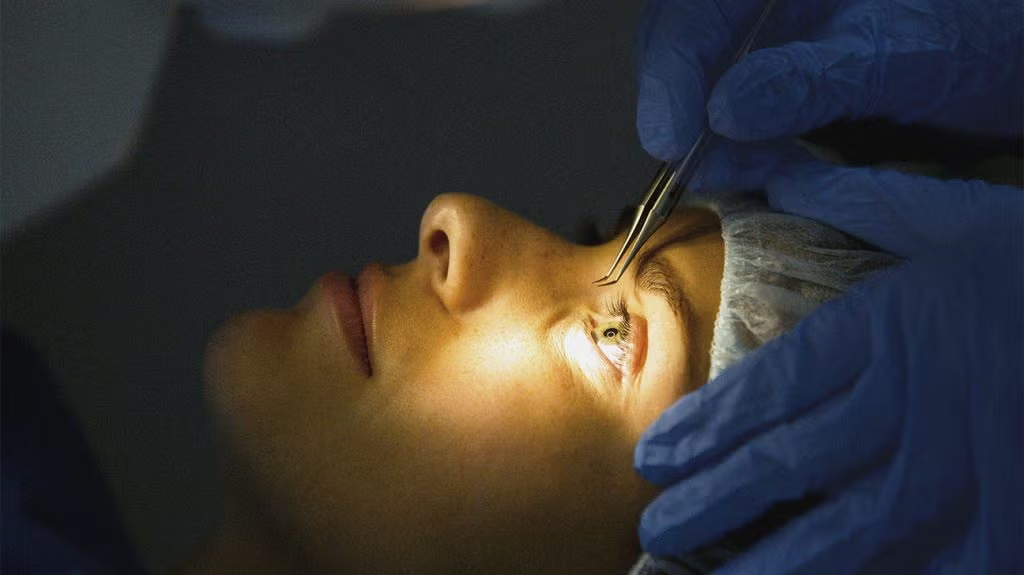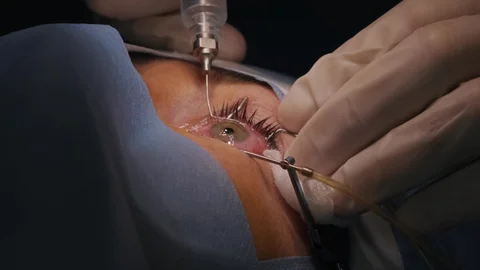LASIK helps correct vision issues like nearsightedness, farsightedness, and astigmatism by reshaping the cornea. This laser eye surgery has been refined with modern techniques, and patient outcomes continue to improve as technology advances.
What is LASIK surgery?
LASIK surgery uses a thin, precise laser to reshape the cornea and improve a patient’s overall vision. It’s a quick, painless outpatient procedure that takes around 15 minutes to complete. LASIK does not require full anesthesia. Rather, all it requires is a little localized anesthetic usually administered via eye drops.
Some of the conditions LASIK can treat include astigmatism, nearsightedness (myopia), and farsightedness (hyperopia).
There are a few different alternatives to LASIK, such as PRK and EVO Visian ICL, so patients seeking vision correction surgery still have options even if they don’t qualify for LASIK itself.
Here are three types of LASIK and procedure

1. Standard LASIK
Standard LASIK involves creating a thin flap in the cornea using a microkeratome blade. It also reshapes the underlying tissue with an excimer laser to correct refractive errors. The flap is re-positioned, and the eye usually heals on its own with minimal discomfort. The method is helpful for patients with stable prescriptions, such as those who have mild myopia and have not experienced a significant change in their vision in more than two years. They must also have sufficient corneal thickness. In these patients, standard LASIK generally produces predictable, stable outcomes with a brief recovery period.
2. Bladeless LASIK
Bladeless LASIK utilizes a femtosecond laser instead of a microkeratome blade to create the corneal flap. This laser-based flap creation enables greater precision in flap thickness, diameter, and orientation. After flap creation, the rest of the procedure is similar to standard LASIK. Eye clinic experts use an excimer laser to reshape the corneal tissue under the surface. Bladeless LASIK can be used for patients with thinner or irregularly shaped corneas. The degree of control provided by the femtosecond laser helps minimize possible complications.
- Bladeless LASIK may also be preferable for individuals who value a more personalized surgical approach.
- The laser can be programmed to suit the anatomy of each eye, allowing for consistency between procedures that promotes uniform healing.
- Due to the degree of customization, this approach helps achieve improved visual results in patients with some corneal disorders.
3. PRK
Photorefractive keratectomy (PRK) is a surface laser eye surgery that does not require the formation of a corneal flap. Instead, the cornea is stripped of its thin epithelial layer, and the underlying tissue is reshaped using an excimer laser. A protective contact lens is then applied over the eye to aid in healing as the epithelium grows back over several days.
- PRK can be appropriate for patients with thin corneas, large pupils, or those whose lifestyle poses risks to flap stability.
- There is no chance of flap displacement after surgery because no flap is used.
- This makes PRK a preferred option for people in physically demanding or high-impact environments.
- The recovery period may be longer than in flap-based procedures, but the visual results are similar over time.
Choosing the Right Procedure
Choosing a laser eye surgery depends on several individual factors. These factors include:
- Age: Candidates should be at least 18 years old and have stable vision. Older patients may experience age-related changes in the eye, including presbyopia, which affects the procedure.
- Lifestyle: Individuals with physically demanding lifestyles may find flapless procedures, such as PRK, useful to reduce the chances of flap displacement.
- Eye health: Conditions such as chronic dry eye, keratoconus, or inflammation may affect eligibility for some procedures. A history of prior eye surgeries also complicates the decision. A specialized assessment helps identify which options remain available.
- Corneal thickness: The thickness of the cornea defines whether the cornea is safe to reshape and what kind of LASIK is structurally suitable.
A thorough eye test helps evaluate these factors and direct you to the appropriate procedure. Specialists use diagnostic tools to measure the shape, thickness, and other parameters required when preparing for surgery. Wearing glasses instead of contact lenses before an eye evaluation helps eye doctors take more accurate measurements.
LASIK Surgery Risks

Although safe, quick, and painless, LASIK and related procedures are not without their risks. Before deciding to undergo the surgery and say goodbye to glasses or contact lenses, it’s important to know the following possible side effects:
- Dry eyes (not an issue with LASEK, PRK, or EVO Visian ICL)
- Light sensitivity
- Infection
- Decreased night vision
One of the most important questions to ask during LASIK consultation involves these risks. Don’t commit to the surgery without being fully informed about both the positives and the negatives associated with it.
Conditions that increase risks
Certain health conditions can increase the risks associated with LASIK surgery or make the outcome less predictable.
Doctors may not recommend laser refractive surgery for you if you have certain conditions, including:
- Autoimmune disorders, such as rheumatoid arthritis.
- A weakened immune system caused by immunosuppressive medications or HIV.
- Constantly dry eyes.
- Recent changes in vision due to medicines, hormonal changes, pregnancy, breastfeeding or age.
- Inflammation of the cornea, lid disorders, eye injuries or eye diseases, such as uveitis, herpes simplex affecting the eye area, glaucoma or cataracts.
- Disorders of the cornea, including keratoconus or corneal ectasia.
LASIK surgery is usually not recommended if you:
- Have an eye disease that causes the cornea to thin and bulge, such as keratoconus.
- Have a family history of keratoconus or other corneal ectasia.
- Have good overall vision.
- Have severe nearsightedness.
- Have very large pupils or thin corneas.
- Have age-related eye changes that cause vision to be less clear.
- Participate in contact sports that may be associated with blows to the face.
If you’re considering LASIK surgery, talk to your doctor about your questions and concerns. Your doctor will discuss whether you’re a candidate for the procedure or other similar procedures.
More References Article:
https://www.mayoclinic.org/tests-procedures/lasik-eye-surgery/about/pac-20384774
https://www.aao.org/eye-health/treatments/facts-about-lasik-complications
https://my.clevelandclinic.org/health/treatments/21805-lasik-eye-surgery

